Filters
Wound Care
-
 Year End Sale 43%
Original price $ 34.95Current price $ 19.97
Year End Sale 43%
Original price $ 34.95Current price $ 19.97Duoderm Dressings CGF Hydrocolloid Dressings 4 x 4, by Convatec 5/Box
Convatec3 reviewsAdvanced Wound Healing for Pressure Ulcers, Bed Sores, and Chronic Wounds Transform your wound care routine with the #1 hospital-recommended hydroc...
View full details1 -
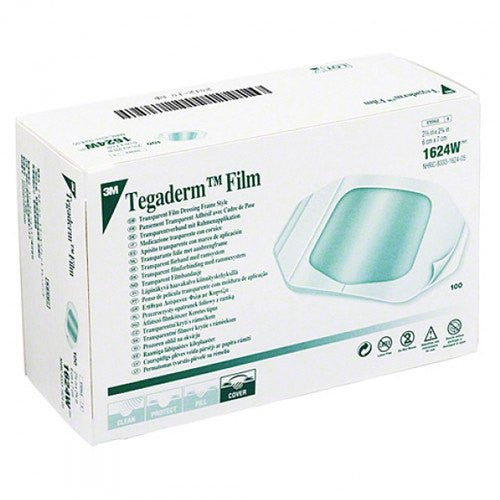 Year End Sale 35%
Original price $ 57.95Current price $ 37.70
Year End Sale 35%
Original price $ 57.95Current price $ 37.70Tegaderm Dressings, 3M Transparent Film Dressings, Waterproof Wound Protection 2.37 inch x 2.75 inch, 100/box #1624W
3M Healthcare15 reviewsAdvanced Waterproof Wound Protection for Medical & Home Use Trust your wound care to the #1 doctor-recommended transparent film dressing – 3M T...
View full details1 -
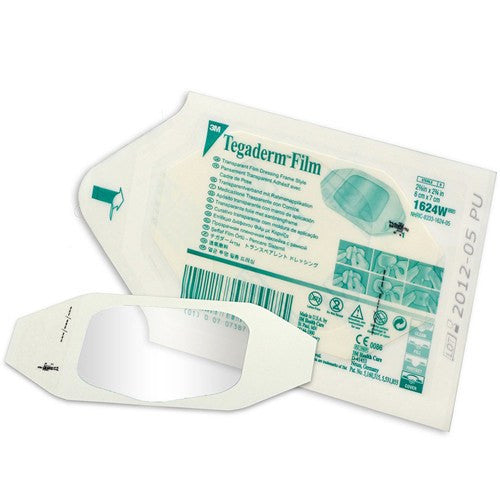 Year End Sale 39%
Original price $ 65.95Current price $ 39.99
Year End Sale 39%
Original price $ 65.95Current price $ 39.99Tegaderm Dressing Transparent Film 4 inch x 4 inch, 50/box
3M Healthcare5 reviewsTegaderm Dressing Transparent Film 4" x 4" is designed to provide a sterile, breathable environment for wound healing. Tegaderm dressing covers and...
View full details1 -
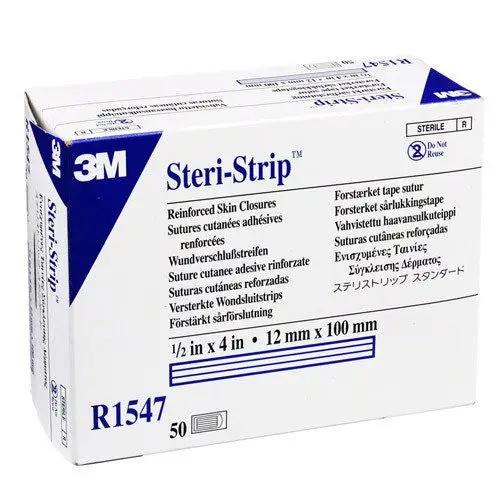 Year End Sale 24%
Original price $ 129.95Current price $ 99.00
Year End Sale 24%
Original price $ 129.95Current price $ 99.00Steri-Strip Reinforced Skin Closures R1547
3M Healthcare2 reviewsBox of 50 Reinforced Skin Closures. 3M Steri-Strips Skin Closures are a reinforced, hypoallergenic elastic adhesive strip made with a soft porous m...
View full details1 -
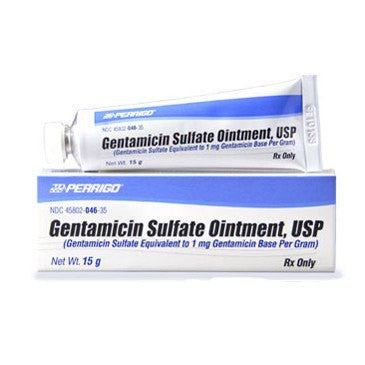 Year End Sale
from $ 65.95
Year End Sale
from $ 65.95Gentamicin Sulfate Cream 0.1%
Perrigo1 reviewGentamicin Sulfate Cream is a topical ointment used for treatment of susceptible bacterial infections, normally gram-negative organisms, including ...
View full details🔒 Medical License Required -
 Year End Sale 47%
Original price $ 12.95Current price $ 6.90
Year End Sale 47%
Original price $ 12.95Current price $ 6.90Sodium Chloride 0.9% Irrigation Saline Solution 500 mL
B Braun40 reviewsB Braun 0.9% Sodium Chloride Irrigation Solution 500ml is a sterile solution used for cleansing wounds and diluting medications. This Saline Irriga...
View full details1 -
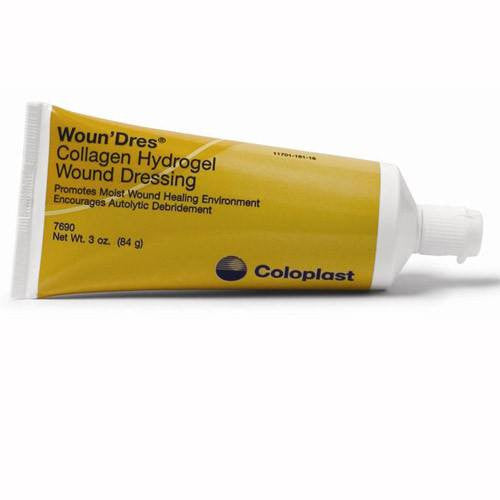 Sold out
Original price $ 29.95Current price $ 22.50
Sold out
Original price $ 29.95Current price $ 22.50Woun'dres Collagen Hydrogel Dressing
Coloplast Corporation5 reviewsColoplast Woun'dres Collagen Hydrogel fills wounds and maintains a moist healing environment in the wound cavity, while protecting new tissue growt...
View full details -
 Year End Sale 42%
Original price $ 19.00Current price $ 11.00
Year End Sale 42%
Original price $ 19.00Current price $ 11.00Wound Measuring Guide Bullseye Target 250/Bag
DynarexNo reviewsWound Measuring Guide Bullseye Targets are used to accurately assess the size and healing progress of wounds. These guides feature concentric circl...
View full details1 -
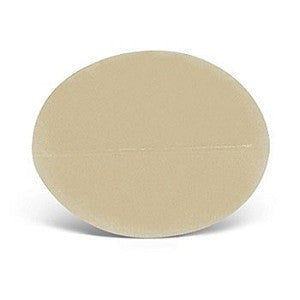 Year End Sale
$ 33.00
Year End Sale
$ 33.00Duoderm Spots Dressings Extra Thin CGF 20-Pack
Convatec1 reviewDuoderm Extra Thin Spots are a highly flexible, control gel formula dressing designed for use on dry to lightly exudating wounds. Duoderm Extra Thi...
View full details1 -
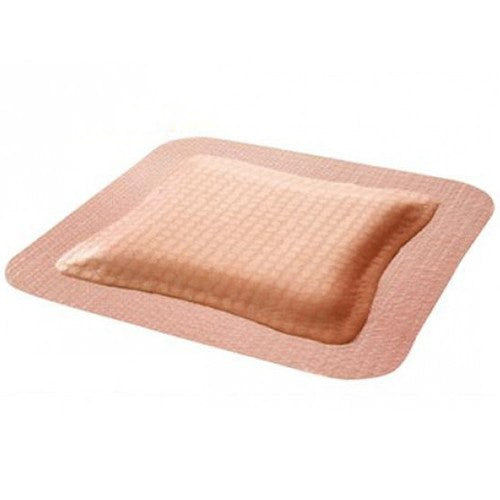 Year End Sale
from $ 115.00
Year End Sale
from $ 115.00Allevyn Adhesive Foam Wound Healing Dressings, Smith & Nephew
Smith & Nephew4 reviewsAllevyn adhesive foam wound healing dressings are an effective way to help promote the healing of wounds. The dressings are made of a soft foam tha...
View full details1 -
 Year End Sale 20%
Original price $ 55.95Current price $ 45.00
Year End Sale 20%
Original price $ 55.95Current price $ 45.00Allevyn Heel Wound Dressings 5 per box
Smith & Nephew1 reviewAllevyn heel wound dressing is designed to provide a moist wound environment, which is beneficial for wound healing. The dressings consist of a foa...
View full details1 -
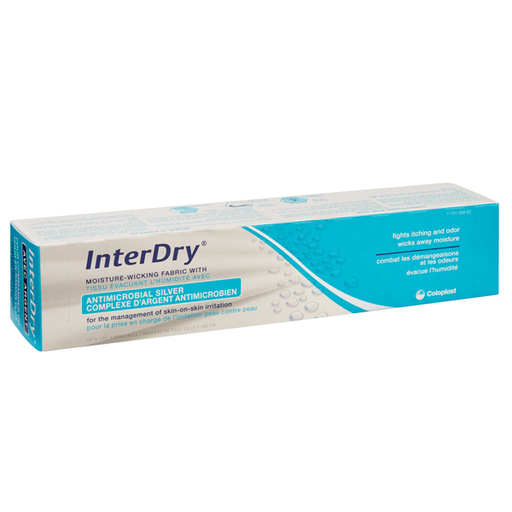 Year End Sale 29%
Original price $ 159.95Current price $ 114.00
Year End Sale 29%
Original price $ 159.95Current price $ 114.00Silver Moisture Wicking Interdry Silver Antimicobal Dressing for Skin Fold Management 10 x 144 inches
Coloplast Corporation7 reviewsSilver Moisture Wicking Interdry Silver Antimicrobial Dressing Skin Fold Management is a medical product designed to manage excess moisture and pre...
View full details1 -
 Year End Sale 26%
Original price $ 38.95Current price $ 29.00
Year End Sale 26%
Original price $ 38.95Current price $ 29.00Silver Nitrate Sticks Applicators for Cauterization 100 Count (Rx)
Dukal75 reviewsSilver Nitrate Sticks for Cauterization work by burning and sealing the tissue. It is a quick, effective way to stop bleeding and is often used in ...
View full details🔒 Medical License Required -
 Year End Sale 30%
Original price $ 19.95Current price $ 14.00
Year End Sale 30%
Original price $ 19.95Current price $ 14.00Hydrocolloid Foam Dressing 2" x 2", 10/box
Dynarex4 reviewsDynaDerm Hydrocolloid Dressing 4” x 4” works to maintain moisture on the site of your wound for a faster healing time. A single dressing can last ...
View full details1 -
 Year End Sale 29%
Original price $ 48.95Current price $ 34.95
Year End Sale 29%
Original price $ 48.95Current price $ 34.95Duoderm Extra Thin Dressing 4 x4 Hydrocolloid Dressings 10/box by Convatec
Convatec10 reviewsThe #1 Choice for Advanced Wound Healing & Skin Protection Experience the industry-leading power of advanced wound care with DuoDERM Extra Thin...
View full details1 -
 Year End Sale 17%
Original price $ 149.95Current price $ 125.00
Year End Sale 17%
Original price $ 149.95Current price $ 125.00DuoDERM Extra Thin Hydrocolloid Dressings 6 x 6 inch Square, Sterile 10/Box
ConvatecNo reviewsDuoDERM Extra Thin Hydrocolloid Dressings are a type of wound dressing that is designed to promote healing and protect a wound from infection. They...
View full details1 -
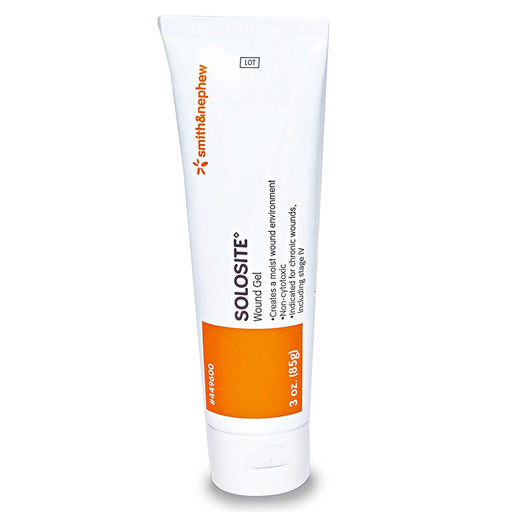 Year End Sale 23%
Original price $ 19.50Current price $ 14.98
Year End Sale 23%
Original price $ 19.50Current price $ 14.98Solosite Gel Hydrogel Wound Dressing 3 oz
Smith & Nephew3 reviewsSolosite Gel is a topical wound dressing that is used to provide a moist environment for healing and to help promote tissue and cell regeneration. ...
View full details1 -
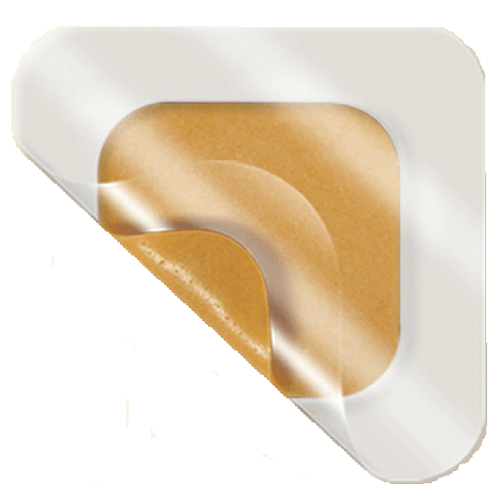 Year End Sale
from $ 159.00
Year End Sale
from $ 159.00Medihoney Hydrogel Dressings with Adhesive Border 10/box
Derma SciencesNo reviewsMedihoney Hydrogel Sheet with Adhesive Border is a wound dressing that contains an added leptospermum honey based to treat moderate draining wounds...
View full details1 -
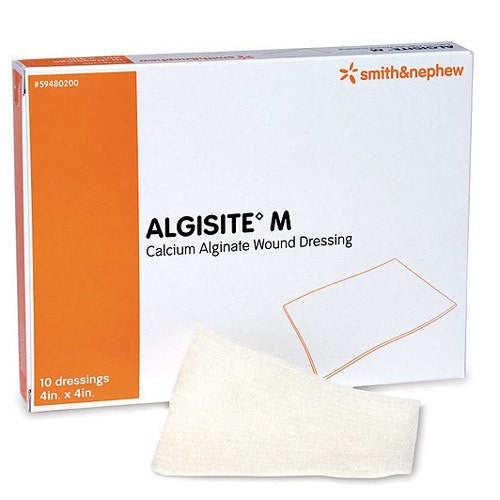 Year End Sale
from $ 40.50
Year End Sale
from $ 40.50Algisite M Calcium Alginate Dressings, 10/Box
Smith & Nephew1 reviewAlgiSite M Calcium Alginate Dressing creates and maintains a moist healing environment, enabling epithelial cells to migrate freely across the woun...
View full details1 -
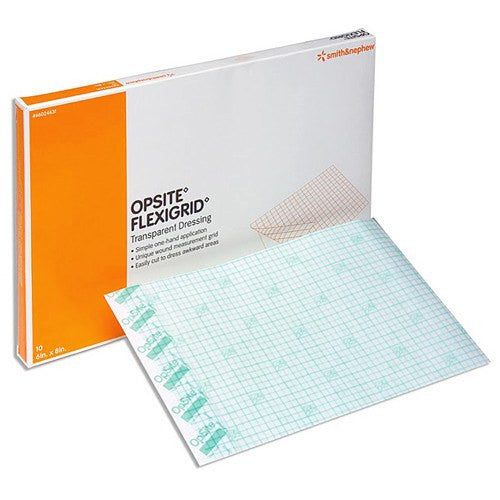 Year End Sale
from $ 29.50
Year End Sale
from $ 29.50Opsite Flexigrid Transparent Dressing
Smith & NephewNo reviewsOpsite Flexigrid Transparent Dressing is a breathable, skin-like, waterproof dressing used to protect open wounds. A polyurethane membrane of clear...
View full details1 -
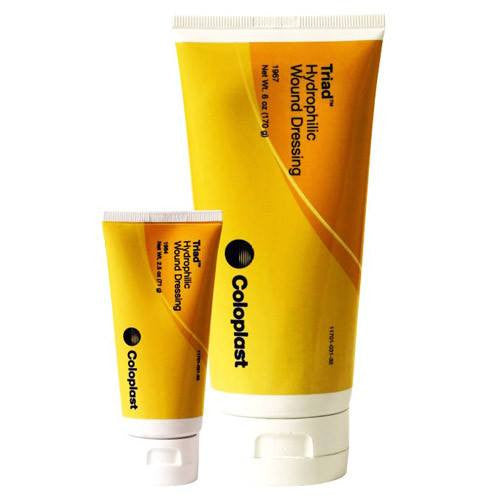 Year End Sale 31%
Original price $ 39.95Current price $ 27.50
Year End Sale 31%
Original price $ 39.95Current price $ 27.50Triad Hydrophilic Wound Dressing 2.5 oz
Coloplast Corporation1 reviewColopast Triad Hydrophilic Wound Dressing is a zinc oxide based hydrophilic paste for treating weeping and hard-to-dress wounds. Triad Hydrophilic ...
View full details1 -
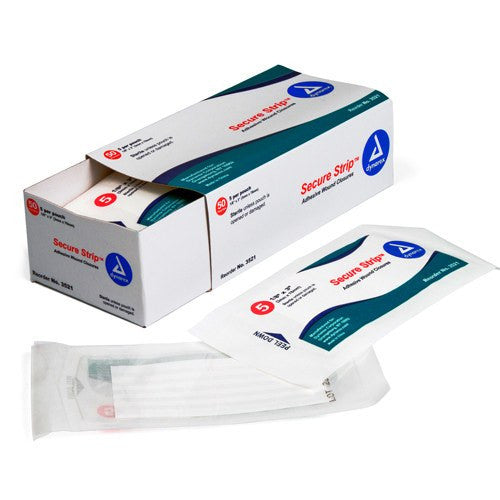 Year End Sale
from $ 29.95
Year End Sale
from $ 29.95Secure Strip Wound Closure (Steri Strips)
Dynarex1 reviewSterile, non-woven, flexible adhesive strips used to help secure and close incisions or lacerations wounds to speed up the healing process. Skin-fr...
View full details1 -
 Sold out
Original price $ 39.95Current price $ 29.80
Sold out
Original price $ 39.95Current price $ 29.80Telfa Adhesive Island Dressing 4 x 5, Sterile 25/Box
Covidien2 reviewsTelfa Adhesive Island Dressings 4 x 5 are designed for use on lightly draining wounds, offering a soft, absorbent, and non-adherent contact layer t...
View full details -
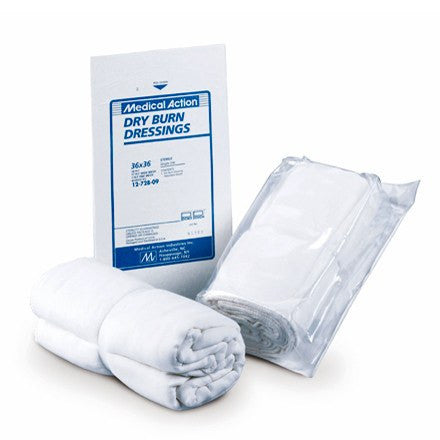 Year End Sale 41%
Original price $ 12.95Current price $ 7.69
Year End Sale 41%
Original price $ 12.95Current price $ 7.69Dry Burn Dressing 18 x 36, White, Sterile, Medical Action
Medical Action2 reviewsThe Medical Action Dry Burn Dressings are designed to be used for absorption, padding, and the debridement of burn wounds. These un-medicated dress...
View full details1 -
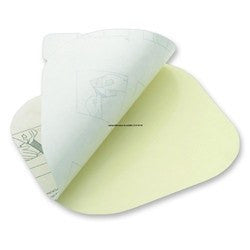 Year End Sale 37%
Original price $ 38.50Current price $ 24.25
Year End Sale 37%
Original price $ 38.50Current price $ 24.25Restore Extra Thin Hydrocolloid Dressing 4 x 4"
HollisterNo reviewsRestore Extra Thin Dressing is a sterile, extra thin occlusive dressing. The flexible film backing acts as a barrier to urine and feces and protect...
View full details1 -
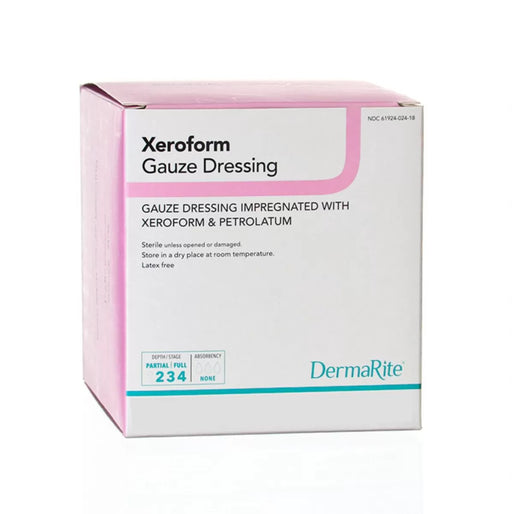 Year End Sale
$ 18.00
Year End Sale
$ 18.00Xeroform Petrolatum Gauze, 2" x 2", Sterile, 25/bx
DermariteNo reviewsXeroform Petrolatum Gauze is a sterile, non-adherent dressing that is composed of a petrolatum gauze saturated with 5% w/v of Xeroform. The petrola...
View full details1 -
 Year End Sale 22%
Original price $ 39.95Current price $ 31.00
Year End Sale 22%
Original price $ 39.95Current price $ 31.00Mastisol Liquid Skin Adhesive Glue 15 ml Spray
Ferndale Laboratories2 reviewsMastisol Liquid Skin Adhesive Glue is a medical product used to seal skin edges and help keep bandages, dressings and other medical devices in plac...
View full details1 -
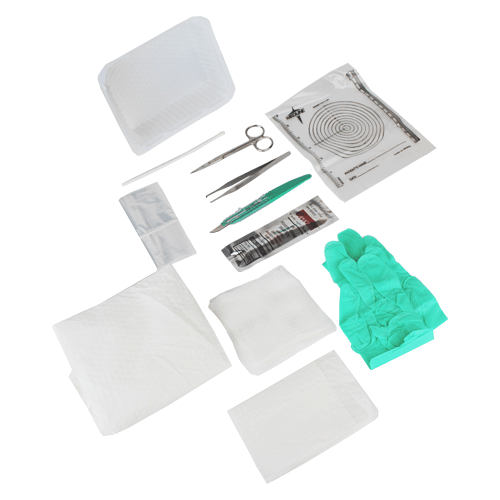 Year End Sale 29%
Original price $ 12.95Current price $ 9.25
Year End Sale 29%
Original price $ 12.95Current price $ 9.25E Kit Debridement Tray with SAFETY Scalpel
Medline IndustriesNo reviewsE Kit Debridement Tray with SAFETY Scalpel includes everything you need to debride a wound. Conveniently packaged in sequence of use, this efficien...
View full details1 -
 Year End Sale 32%
Original price $ 39.95Current price $ 27.00
Year End Sale 32%
Original price $ 39.95Current price $ 27.00Opsite IV Catheter Securement Dressing 4" x 5.5" Sterile, 10 dressings per box
Smith & Nephew1 reviewOpsite 3000 IV Catheter Securement Dressing is a sterile, transparent, adhesive dressing designed to secure and protect intravenous (IV) catheters....
View full details1 -
 Year End Sale
from $ 29.95
Year End Sale
from $ 29.95AquaCel Ag Advantage Silver Hydrofiber Wound Dressing Ribbon Rope 3/4" x 18 inch
ConvatecNo reviewsUnlock the power of advanced wound care with the AQUACEL® Ag Advantage Silver Hydrofiber Dressing Ribbon Rope by ConvaTec. Designed for optimal hea...
View full details1 -
 Year End Sale
from $ 85.00
Year End Sale
from $ 85.00Aquacel Adhesive Silicone Foam Dressing with Border
ConvatecNo reviewsExperience advanced wound care management with the AQUACEL® Adhesive Silicone Foam Dressing with Border by ConvaTec. Meticulously designed to promo...
View full details1 -
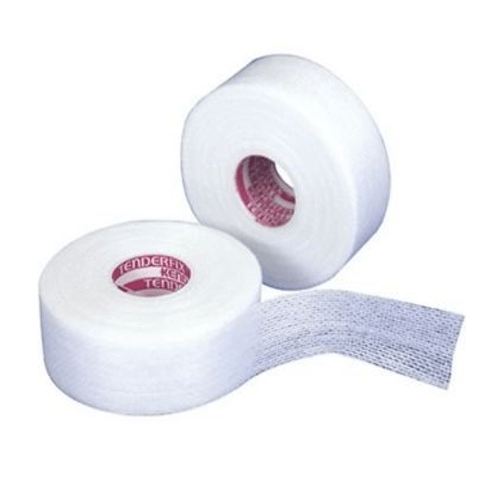 Year End Sale 25%
Original price $ 9.98Current price $ 7.50
Year End Sale 25%
Original price $ 9.98Current price $ 7.50Tenderfix Cloth Tape 2 inch x 10 yards roll
CovidienNo reviewsTenderfix Cloth Tape is a soft, non-woven hypoallergenic adhesive tape. Tenderfix is flexible and gently conforms to catheters, iv tubing and wound...
View full details1 -
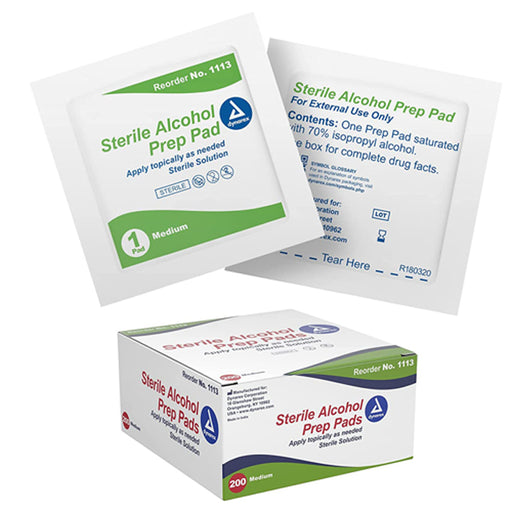 Year End Sale 43%
Original price $ 3.95Current price $ 2.25
Year End Sale 43%
Original price $ 3.95Current price $ 2.25Alcohol Prep Pads, Sterile with Medium Sized Pad, 200/Box
Dynarex67 reviewsAlcohol prep pads are small single-use medical products that contain alcohol for disinfection purposes. They typically come in individually sealed ...
View full details1 -
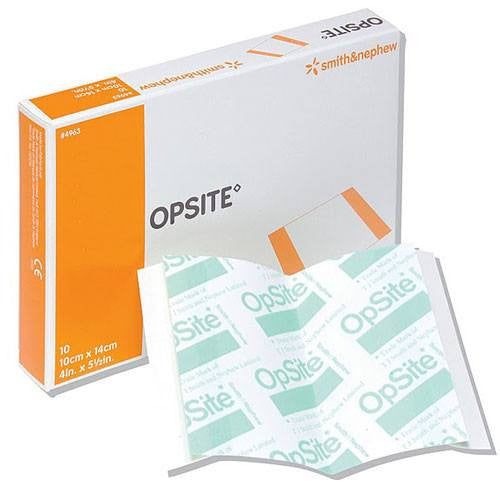 Year End Sale
from $ 2.50
Year End Sale
from $ 2.50Opsite Transparent Film Dressings
Smith & NephewNo reviewsOpsite Transparent Film Dressings by Smith & Nephew are high-quality, sterile wound dressings designed to provide a waterproof and bacteria-res...
View full details1 -
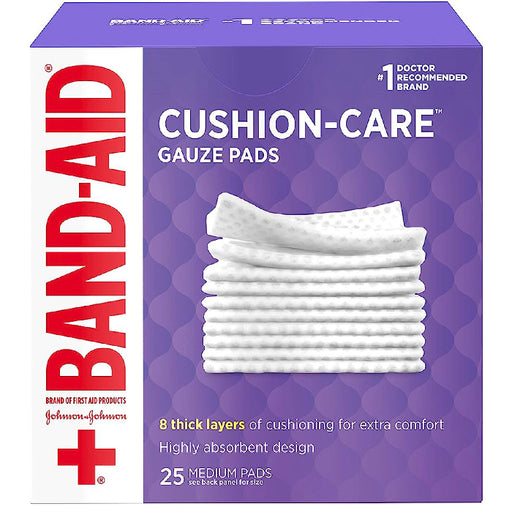 Year End Sale 36%
Original price $ 4.95Current price $ 3.15
Year End Sale 36%
Original price $ 4.95Current price $ 3.15First Aid Gauze Pads, Medium Size 3 x 3, Sterile 10/Box
Johnson & Johnson1 reviewBand-Aid Gauze Pads Sterile Medium 3 x 3 inch are an essential medical item that offers superior protection and comfort for all kinds of minor cuts...
View full details1 -
 Year End Sale 22%
Original price $ 36.95Current price $ 29.00
Year End Sale 22%
Original price $ 36.95Current price $ 29.00Xeroform Petrolatum Gauze, 4 inch x 4 inch, Sterile, 25/bx
Integrity Medical Devices3 reviewsXeroform Petrolatum Gauze Dressings are used to create a protective barrier and help maintain a moist wound bed for autolytic type healing. These s...
View full details1 -
 Year End Sale 28%
Original price $ 59.95Current price $ 43.00
Year End Sale 28%
Original price $ 59.95Current price $ 43.00Xeroform Petrolatum Dressings 5 inch x 9 inch Sterile 50/bx
DermaRite Industries1 reviewXeroform Petrolatum dressings are a popular type of wound dressing because they are easy to use, effective, and they won’t stick to the wound. Thes...
View full details1 -
 Year End Sale 23%
Original price $ 38.95Current price $ 29.95
Year End Sale 23%
Original price $ 38.95Current price $ 29.95Betamethasone Dipropionate Lotion 0.05% 60 mL by Sandoz (Rx)
Sandoz-Fougera6 reviewsBetamethasone Dipropionate Lotion is a topical corticosteroid that is used to treat a variety of skin conditions, including eczema, psoriasis, and ...
View full details🔒 Medical License Required -
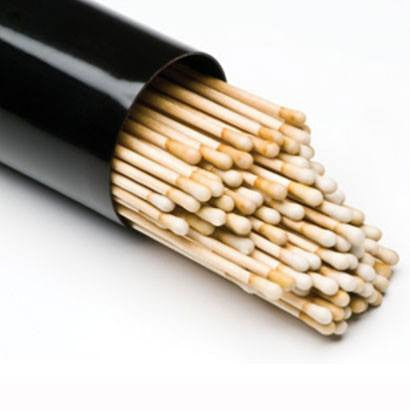 Year End Sale 19%
Original price $ 119.95Current price $ 97.00
Year End Sale 19%
Original price $ 119.95Current price $ 97.00100 Count Silver Nitrate Applicator 12" Extra Long Stick (Rx)
GrafcoNo reviewsSilver Nitrate Sticks - Cauterize, prevent hemostasis, and remove unwanted tissue such as warts, skin tags, and granulation tissue Caustic Silver N...
View full details1 -
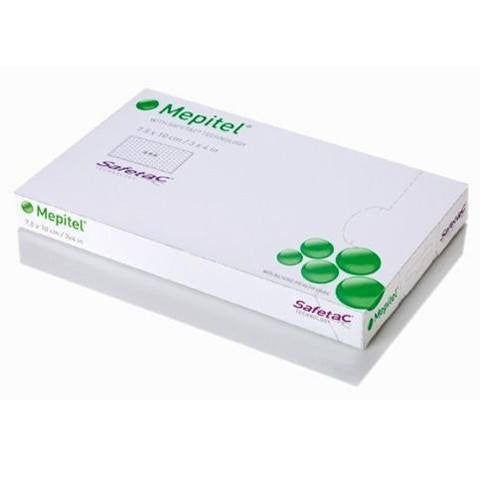 Year End Sale 26%
Original price $ 98.95Current price $ 73.00
Year End Sale 26%
Original price $ 98.95Current price $ 73.00Mepitel Non-Adherent Soft Silicone Layer Dressing 2x3
Mölnlycke Health CareNo reviewsReduce the frequency and trauma of dressing changes using the Mepitel non-adherent soft silicone layer dressing. The porous design of this dressing...
View full details1 -
 Year End Sale 36%
Original price $ 5.95Current price $ 3.80
Year End Sale 36%
Original price $ 5.95Current price $ 3.80Central Line Dressing Change Tray, Sterile
Dynarex1 reviewDynarex Central Line Dressing Change Tray is used for changing, cleaning, and dressing central line catheters. This tray contains all the necessary...
View full details1 -
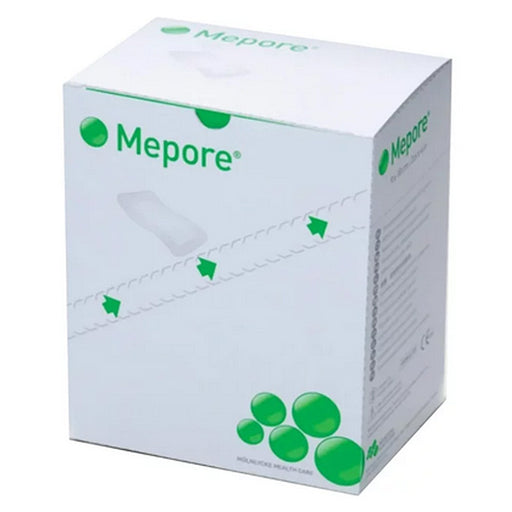 Year End Sale 38%
Original price $ 39.95Current price $ 24.95
Year End Sale 38%
Original price $ 39.95Current price $ 24.95Mepore Adhesive Surgical Island Dressing 3.6" x 6" 50/bx
MolnlyckeNo reviewsMepore Adhesive Surgical Island Dressing is a breathable, absorbent, self-adhesive dressing for a wide variety of wounds with low to moderate exuda...
View full details1 -
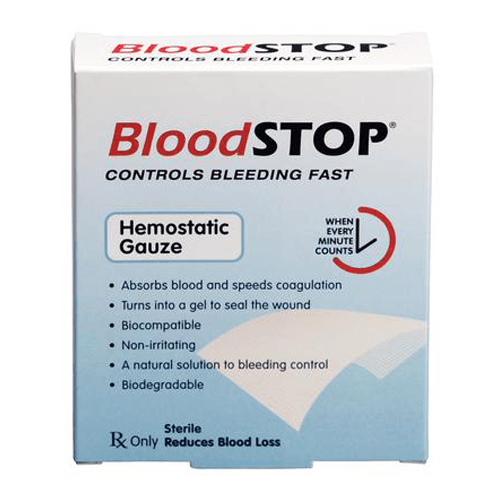 Year End Sale 7%
Original price $ 149.95Current price $ 139.00
Year End Sale 7%
Original price $ 149.95Current price $ 139.00BloodSTOP Advanced Hemostasis Gauze 2”x2” 20/Pkg
Cardinal HealthNo reviewsBloodSTOP Advanced Hemostasis Gauze 2”x2” 20/Pkg is a natural, biocompatible, animal-free, and non-irritating hemostatic agent that quickly absorbs...
View full details1 -
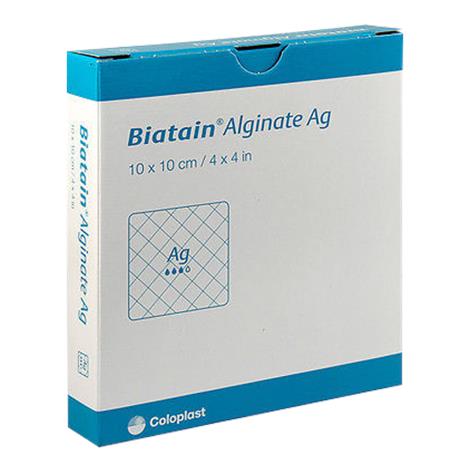 Year End Sale 12%
Original price $ 129.95Current price $ 115.00
Year End Sale 12%
Original price $ 129.95Current price $ 115.00Biatain Alginate AG Dressing with Silver 4 x 4 (10 Dressings)
Coloplast CorporationNo reviewsBiatain Alginate AG Dressing with Silver 4 x 4 (10 Dressings) Features: Coloplast Biatain Alginate Ag Dressing with Silver is very soft and comfor...
View full details1 -
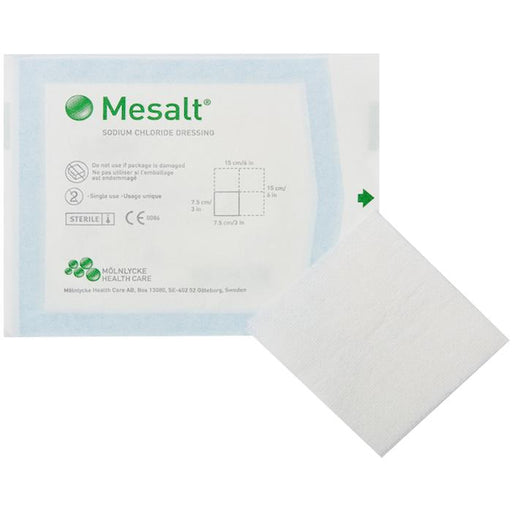 Year End Sale
from $ 37.95
Year End Sale
from $ 37.95Mesalt Sodium Chloride Impregnated Absorbent Dressings
MolnlyckeNo reviewsMolnlycke Mesalt Sodium Chloride Impregnated Dressing absorb bacteria, exudate and necrotic material. Mesalt is made up of an absorbent nonwoven vi...
View full details1 -
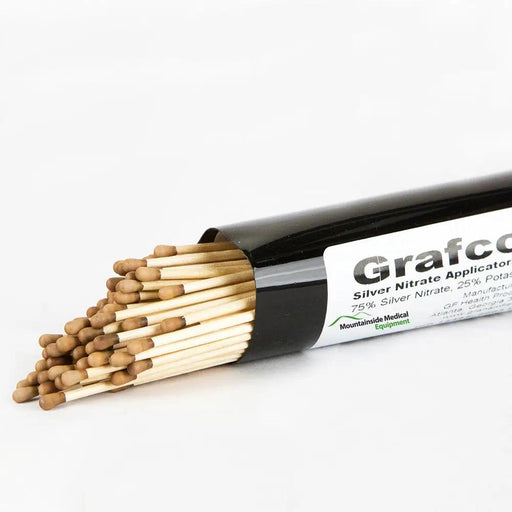 Year End Sale 28%
Original price $ 49.95Current price $ 36.00
Year End Sale 28%
Original price $ 49.95Current price $ 36.00100 Silver Nitrate Sticks (Caustic Pencils) (Rx)
Grafco152 reviewsSilver nitrate sticks are used for cauterizing or burning away tissue, typically in medical procedures or to stop bleeding in minor wounds. Silver ...
View full details🔒 Medical License Required -
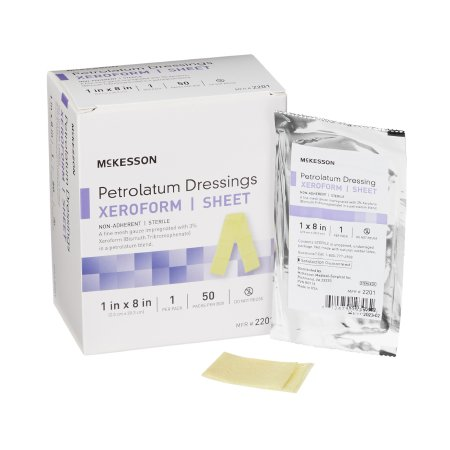 Year End Sale 23%
Original price $ 1.10Current price $ 0.85
Year End Sale 23%
Original price $ 1.10Current price $ 0.85Xeroform Petrolatum Dressing 1" X 8" Gauze Bismuth Sterile (Each)
McKessonNo reviewsXeroform Petrolatum Dressing 1" X 8" Gauze Bismuth Tribromophenate Sterile Xeroform petrolatum dressing gauze is a type of medical dressing consist...
View full details1 -
 Sold out
Original price $ 11.95Current price $ 7.85
Sold out
Original price $ 11.95Current price $ 7.85Band-Aid Hydro Seal Blister Cushion Bandage Medium 5-Pack
Johnson and Johnson ConsumerNo reviewsBand-Aid Brand Hydro Seal Bandages Blister Cushions Extreme protects from rubbing and pressure to help prevent blisters.The blister pads stay in pl...
View full details

















































